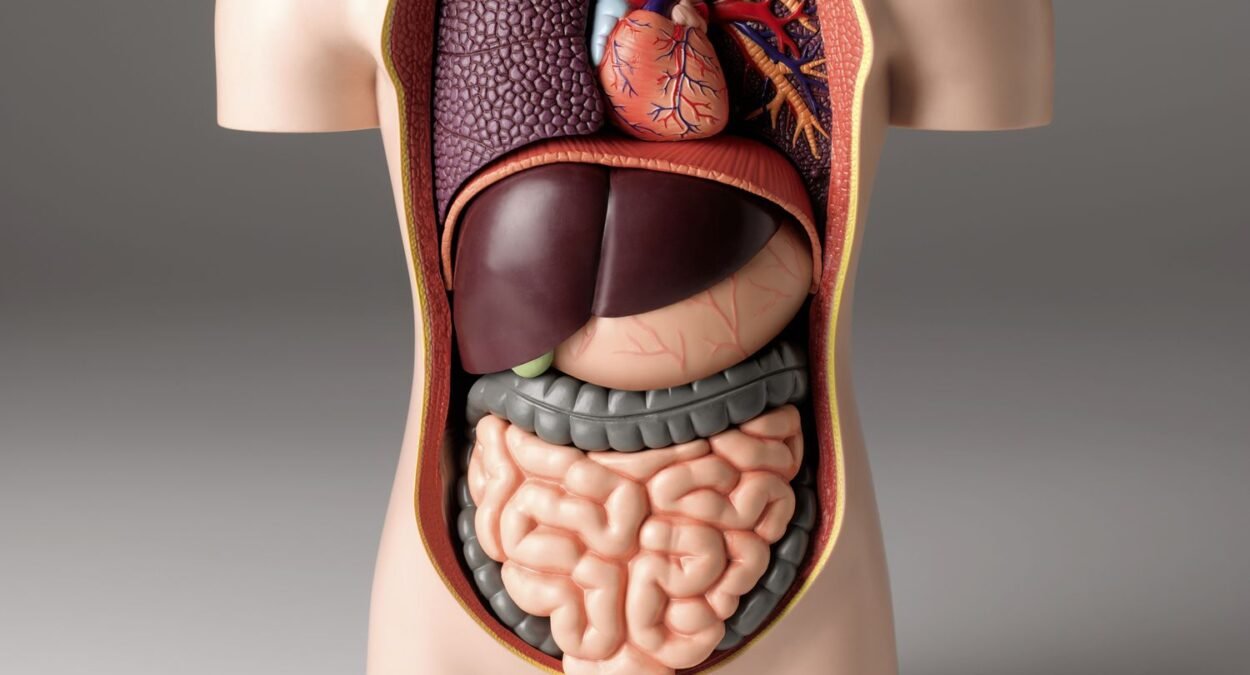Comprehensive Nursing Exam Review: 100 Essential Questions and Answers | Mastering Your Nursing Exam: 100 Essential Questions and Answers (Part 1)
Title: Comprehensive Nursing Exam Review: 100 Essential Questions and Answers | Mastering Your Nursing Exam: 100 Essential Questions and Answers
Are you preparing for your upcoming nursing exam and feeling overwhelmed by the vast amount of information you need to cover? Look no further! In this comprehensive blog post, we have compiled 100 essential questions and their detailed answers to help you master your nursing exam. Whether you’re a nursing student or a practicing nurse looking to refresh your knowledge, this review is designed to enhance your understanding and boost your confidence.
From anatomy and physiology to pharmacology, pathophysiology, and various nursing specialties, we have covered a wide range of topics that frequently appear in nursing exams. Each question has been carefully crafted to test your knowledge and understanding of the subject matter. The corresponding answers provide in-depth explanations, ensuring that you not only memorize the information but also comprehend the underlying concepts.
By immersing yourself in this comprehensive review, you will strengthen your critical thinking skills and gain the ability to apply your knowledge in practical scenarios. Additionally, the diverse range of topics covered will enable you to approach your nursing exam with confidence, knowing that you have a solid foundation in all the essential areas.
Remember, preparation is key to success.
Use this resource as a valuable tool in your study routine, and allocate dedicated time to review and practice the questions. As you progress through the material, take note of any areas that require further attention and seek additional resources or guidance as needed.
Whether you’re aiming for a top score on your nursing exam or simply looking to reinforce your knowledge, this comprehensive review of 100 essential questions and answers is your go-to resource. So, buckle up, dive in, and embark on your journey to mastering your nursing exam!
Anatomy
Anatomy is a fundamental subject in nursing that focuses on the study of the structure and organization of the human body. It provides nurses with a detailed understanding of the various systems, organs, and tissues that make up the human body. By studying anatomy, nurses gain knowledge about the physical composition of the body and its different parts, including bones, muscles, organs, and blood vessels.
This knowledge is crucial for assessing and interpreting physical findings, understanding the location and function of body structures, and identifying potential health issues. Understanding anatomy enables nurses to provide safe and effective care by recognizing normal anatomy and identifying any abnormalities or deviations from the norm. It forms the foundation for other nursing disciplines, such as physiology, pathophysiology, and medical-surgical nursing, as it provides the anatomical context necessary to comprehend how the body functions, how diseases manifest, and how nursing interventions can be applied.
Overall, anatomy plays a vital role in nursing education and practice, empowering nurses with the essential knowledge to deliver competent and holistic care to their patients.
Here are the answers to the anatomy-related questions:
1. What are the four primary tissue types found in the human body?
The four primary tissue types found in the human body are:
a. Epithelial tissue: It covers the body surfaces, lines internal organs, and forms glands.
b. Connective tissue: It supports and connects different structures in the body, such as bone, cartilage, tendons, ligaments, and blood.
c. Muscular tissue: It enables movement by contracting and relaxing. There are three types: skeletal, smooth, and cardiac.
d. Nervous tissue: It transmits electrical signals and coordinates body functions. It consists of neurons and supporting cells.
2. Which bone forms the majority of the bony thorax?
The sternum (breastbone) forms the majority of the bony thorax. It is a flat bone located in the middle of the chest and serves as an attachment site for the ribs.
3. What is the largest organ in the human body?
The skin is the largest organ in the human body. It covers the entire body and serves as a protective barrier, regulates body temperature, and plays a role in sensory perception.
4. Which organ produces insulin in the body?
The pancreas produces insulin in the body. Insulin is a hormone that helps regulate blood sugar levels by facilitating the uptake of glucose by body cells.
5. What is the function of the cerebellum?
The cerebellum is responsible for coordinating voluntary movements, maintaining balance, and muscle tone. It plays a vital role in motor control and coordination.
6. What are the four chambers of the heart?
The four chambers of the heart are:
a. Right atrium: It receives deoxygenated blood from the body through the superior and inferior vena cava.
b. Right ventricle: It pumps deoxygenated blood to the lungs for oxygenation.
c. Left atrium: It receives oxygenated blood from the lungs through the pulmonary veins.
d. Left ventricle: It pumps oxygenated blood to the rest of the body through the aorta.
7. What is the function of the kidneys?
The kidneys have several essential functions, including:
a. Filtration: They filter waste products, excess water, and electrolytes from the blood to form urine.
b. Regulation of fluid and electrolyte balance: They help maintain the body’s water and electrolyte levels within a narrow range.
c. Acid-base balance: The kidneys help regulate the pH of the blood by excreting hydrogen ions and reabsorbing bicarbonate ions.
d. Production of hormones: The kidneys produce hormones like erythropoietin and renin, which play roles in red blood cell production and blood pressure regulation.
8. Which bone is commonly known as the collarbone?
The clavicle is commonly known as the collarbone. It is a long, S-shaped bone located horizontally between the sternum and the shoulder blade. The clavicle serves as a strut that holds the shoulder joint in place and provides stability to the upper limb.
9. What are the four primary tissue types found in the human body?
Answer: The four primary tissue types are epithelial, connective, muscular, and nervous tissue.
10. What is the function of the respiratory system?
Answer: The respiratory system is responsible for the exchange of oxygen and carbon dioxide between the body and the external environment.
11. Which bone forms the majority of the bony thorax?
Answer: The sternum (breastbone) forms the majority of the bony thorax.
12. What is the largest organ in the human body?
Answer: The skin is the largest organ in the human body.
13. Which organ produces insulin in the body?
Answer: The pancreas produces insulin.
14. What are the main functions of the liver?
Answer: The liver is involved in processes such as detoxification, protein synthesis, and production of bile for digestion.
15. What is the function of the cerebellum?
Answer: The cerebellum is responsible for coordinating voluntary movements, maintaining balance, and muscle tone.
16. What are the four chambers of the heart?
Answer: The four chambers of the heart are the right atrium, right ventricle, left atrium, and left ventricle.
17. What is the function of the kidneys?
Answer: The kidneys filter waste products from the blood, regulate fluid and electrolyte balance, and help maintain blood pressure.
18. Which bone is commonly known as the collarbone?
Answer: The clavicle is commonly known as the collarbone.
Remember, anatomy is a vast subject, and it’s important to study the different systems and structures in detail for a comprehensive understanding. These questions serve as a starting point, but it’s recommended to explore more topics and resources while preparing for your nursing exams.
I hope these answers help! If you have any more questions, feel free to ask.
Physiology
Physiology is a critical subject in nursing that focuses on understanding how the human body functions and maintains its internal balance. It explores the complex mechanisms and processes that occur within the body’s systems and organs.
For nurses, studying physiology provides a deep understanding of how the body’s systems work together to maintain homeostasis, regulate vital functions, and respond to internal and external stimuli. By studying physiology, nurses gain knowledge about processes such as circulation, respiration, digestion, metabolism, and hormonal regulation.
This knowledge helps nurses assess and interpret patient signs and symptoms, understand the effects of medications and interventions on the body, and provide appropriate care based on physiological principles.
Understanding physiology is crucial for nurses to recognize normal physiological parameters, identify deviations from normal, and intervene appropriately to promote health and well-being. It provides the foundation for comprehending disease processes, recognizing physiological changes associated with illness, and implementing nursing interventions to restore balance and support the body’s natural healing processes.
In summary, physiology is an integral part of nursing education and practice, equipping nurses with the knowledge to provide holistic, evidence-based care and effectively address the physiological needs of their patients.
Physiology-related nursing exam questions and answers:
1. What is the role of the hypothalamus in the body?
Answer: The hypothalamus regulates body temperature, hunger, thirst, and controls the release of hormones from the pituitary gland.
2. What is the function of red blood cells?
Answer: Red blood cells, or erythrocytes, transport oxygen from the lungs to body tissues and help carry carbon dioxide back to the lungs.
3. What is the normal range for blood pH in the human body?
Answer: The normal range for blood pH in the human body is approximately 7.35-7.45.
4. What is the primary function of the kidneys in maintaining homeostasis?
Answer: The kidneys help regulate fluid and electrolyte balance, acid-base balance, and excrete waste products through urine formation.
5. How does the sympathetic nervous system respond during the “fight-or-flight” response?
Answer: The sympathetic nervous system prepares the body for action by increasing heart rate, dilating airways, and redirecting blood flow to vital organs.
6. What is the role of insulin in glucose regulation?
Answer: Insulin facilitates the uptake of glucose by body cells, thus lowering blood glucose levels.
7. What is the function of the lymphatic system?
Answer: The lymphatic system helps maintain fluid balance, transports fatty acids, and participates in immune responses.
8. How does the body regulate body temperature when it is too high?
Answer: The body regulates body temperature when it is too high through mechanisms such as vasodilation, sweating, and increased respiration.
9. What is the role of aldosterone in the body?
Answer: Aldosterone is a hormone that helps regulate sodium and water balance in the body by promoting reabsorption of sodium in the kidneys.
10. How does the respiratory system respond to increased carbon dioxide levels in the blood?
Answer: Increased carbon dioxide levels in the blood trigger an increase in respiratory rate and depth to eliminate excess carbon dioxide.
10. What is the role of the hypothalamus in the body?
The hypothalamus plays a crucial role in maintaining homeostasis in the body. It serves as the control center for regulating body temperature, hunger and thirst, sleep-wake cycles, and the release of various hormones. Additionally, the hypothalamus is involved in the autonomic nervous system and plays a role in emotional and behavioral responses.
11. What is the function of red blood cells?
Red blood cells, or erythrocytes, have the primary function of carrying oxygen from the lungs to body tissues and transporting carbon dioxide, a waste product, from the tissues back to the lungs for elimination. They contain a protein called hemoglobin that binds to oxygen and helps facilitate its transport.
12. What is the normal range for blood pH in the human body?
The normal range for blood pH in the human body is approximately 7.35-7.45. Maintaining this narrow range is essential for proper physiological functioning. Deviations from this range can have significant implications for enzyme activity, oxygen delivery, and cellular metabolism.
13. What is the primary function of the kidneys in maintaining homeostasis?
The primary function of the kidneys in maintaining homeostasis is to regulate fluid and electrolyte balance in the body. They help filter waste products, excess water, and electrolytes from the blood, which are then excreted as urine. Additionally, the kidneys play a role in regulating acid-base balance, blood pressure, and the production of red blood cells through the release of hormones like erythropoietin.
14. How does the sympathetic nervous system respond during the “fight-or-flight” response?
The sympathetic nervous system prepares the body for the “fight-or-flight” response in times of stress or perceived danger. During this response, sympathetic nerve fibers release neurotransmitters like adrenaline (epinephrine) and norepinephrine, leading to increased heart rate, dilation of airways, redirection of blood flow to vital organs, and heightened alertness.
15. What is the role of insulin in glucose regulation?
Insulin is a hormone produced by the pancreas and plays a crucial role in glucose regulation. It facilitates the uptake of glucose by body cells, promoting its utilization for energy production or storage. Insulin helps lower blood glucose levels by stimulating the uptake of glucose into cells, particularly in the liver, muscles, and adipose tissue.
16. What is the function of the lymphatic system?
The lymphatic system has several functions in the body, including:
– Drainage: It collects and transports excess interstitial fluid, known as lymph, back into the bloodstream.
– Immune response: It plays a vital role in the body’s defense against pathogens by filtering lymph and activating immune cells like lymphocytes.
– Lipid absorption: The lymphatic system absorbs dietary fats and fat-soluble vitamins from the small intestine and transports them to the bloodstream.
17. How does the body regulate body temperature when it is too high?
When body temperature is too high, the body initiates mechanisms to regulate and reduce it. The primary mechanisms include:
– Vasodilation: Blood vessels near the skin surface dilate, allowing more blood to flow near the skin’s surface and promoting heat dissipation through radiation.
– Sweating: Sweat glands secrete sweat onto the skin, and as sweat evaporates, it cools the body.
– Increased respiration: Breathing rate may increase to facilitate heat loss through exhaled air.
– Inhibition of heat production: The body may decrease metabolic activity to reduce heat production.
I hope these answers are helpful! If you have any further questions, feel free to ask.
Remember, physiology is a complex subject, and it’s important to study various body systems and their functions in detail. These questions provide a starting point, but it’s recommended to explore more topics and resources while preparing for your nursing exams.
In conclusion,
Preparing for a nursing exam can be a daunting task, but with the right resources and strategies, you can excel and achieve your goals. The blog post “Comprehensive Nursing Exam Review: 100 Essential Questions and Answers | Mastering Your Nursing Exam: 100 Essential Questions and Answers” provides a valuable tool for your exam preparation.
By addressing a wide range of topics, from anatomy and physiology to nursing specialties and ethics, this review ensures that you have a solid understanding of the essential concepts. The carefully crafted questions and detailed answers not only help you memorize information but also enhance your critical thinking skills and ability to apply knowledge in real-world scenarios.
To make the most of this resource, dedicate focused study time, take notes, and identify areas that require further attention. Seek additional resources or guidance if needed, and practice regularly to reinforce your understanding and boost your confidence.
Remember, success on your nursing exam requires consistent effort, discipline, and a comprehensive understanding of the material. With the comprehensive review provided in this blog post, you have a valuable tool to help you master your nursing exam and take a significant step towards your nursing career.
Good luck with your exam preparation, and may you achieve the success you deserve in your nursing journey!
https://nursingscholar101.com/the-fascinating-world-of-human-physiology/
All India Nursing Exam: 60 Plus Common Questions and Answers For Better Result (Part 1)
https://collegedunia.com/courses/bachelor-of-science-bsc-nursing





